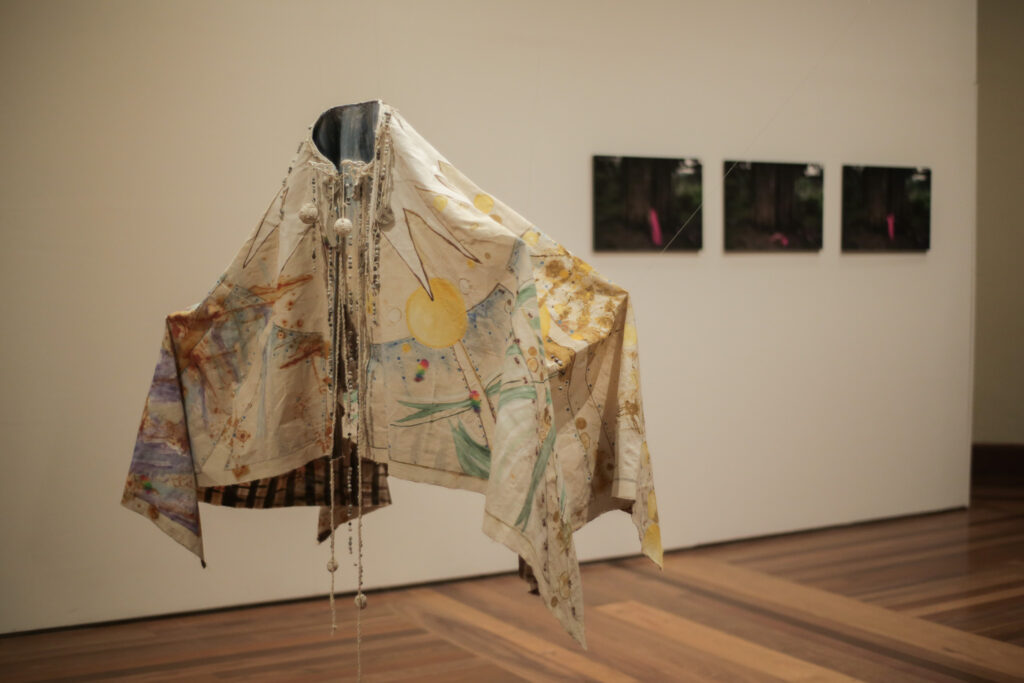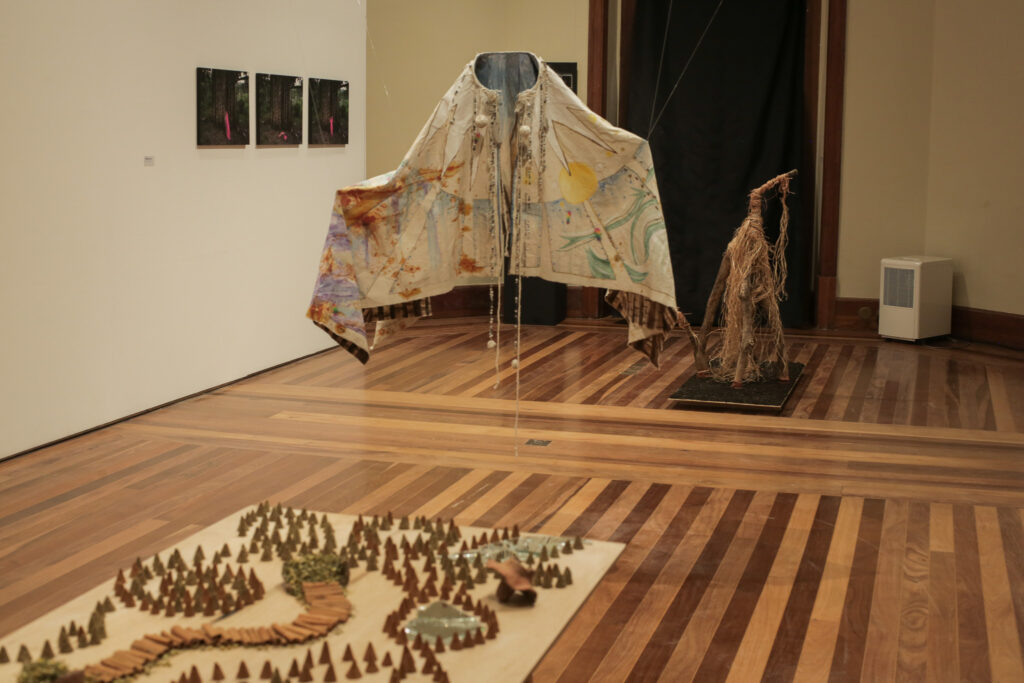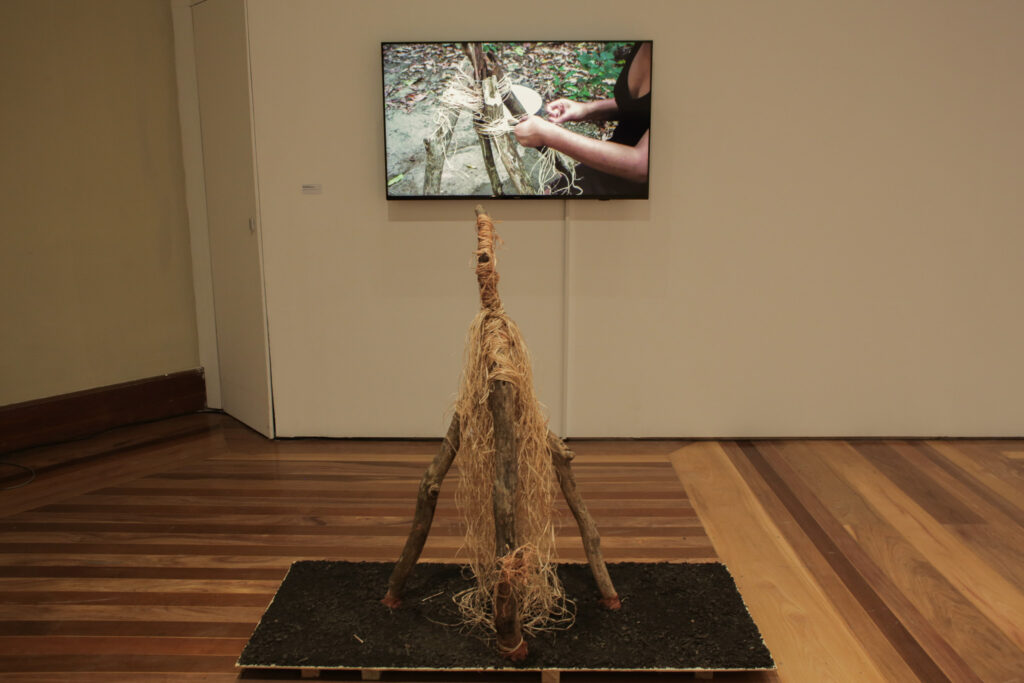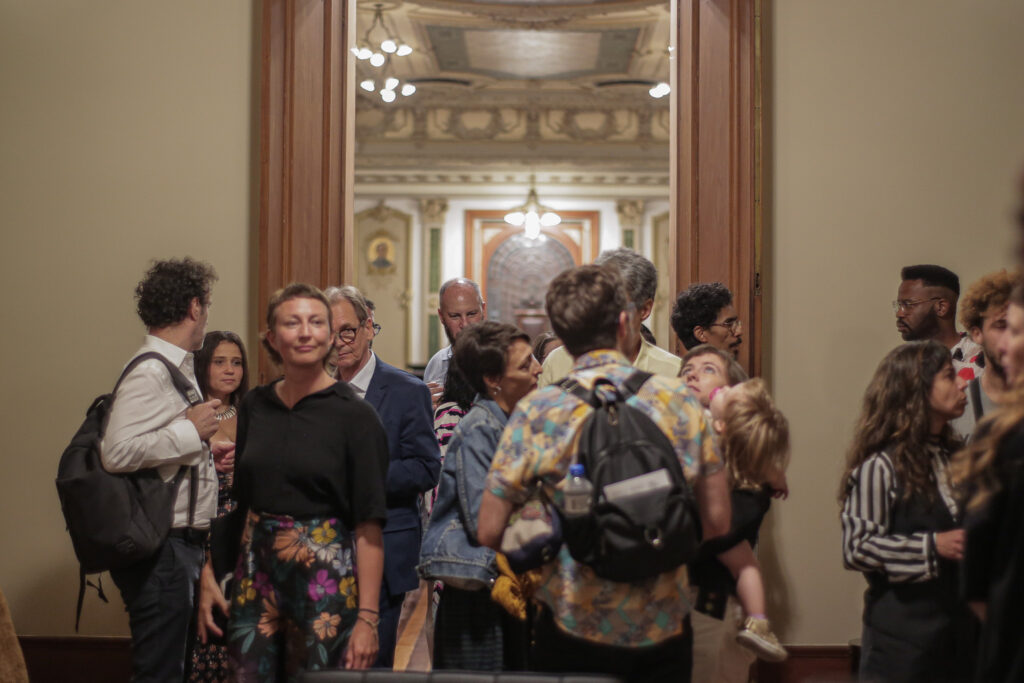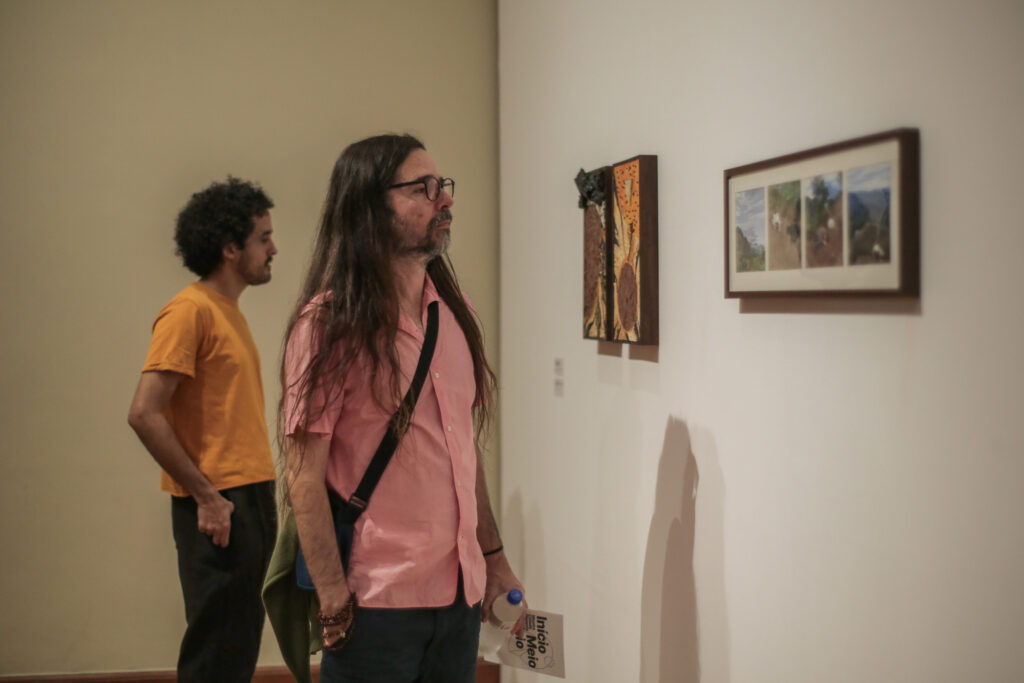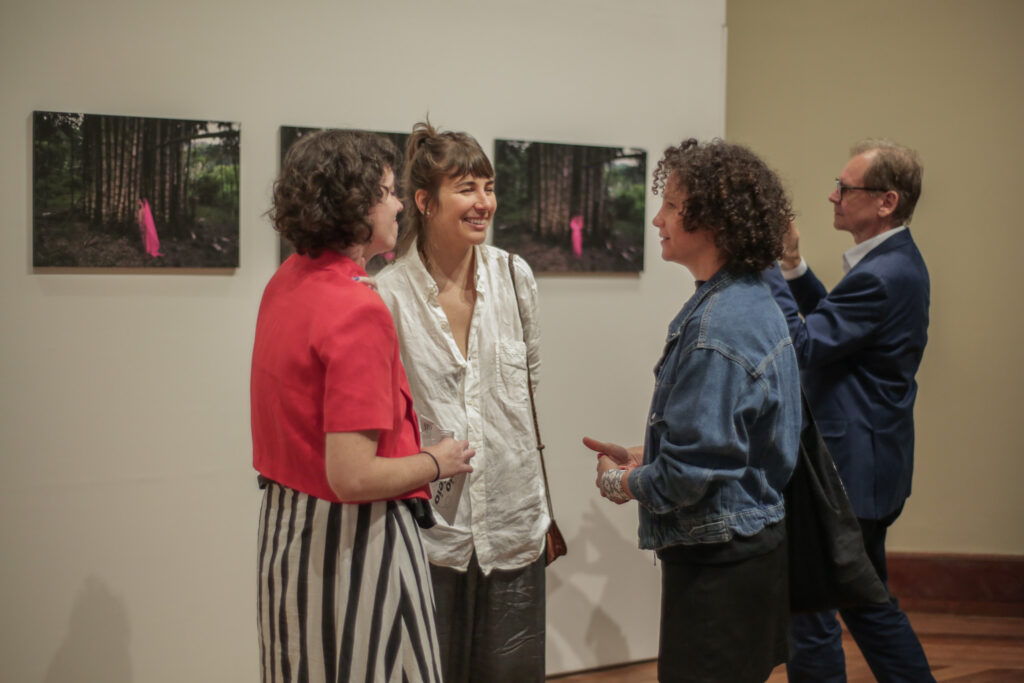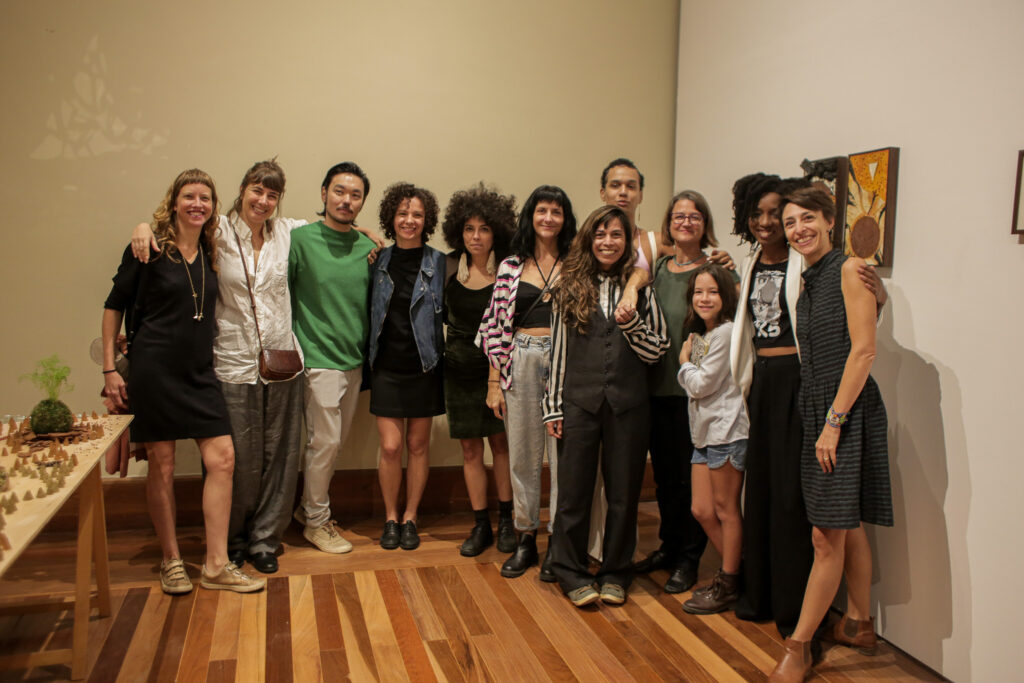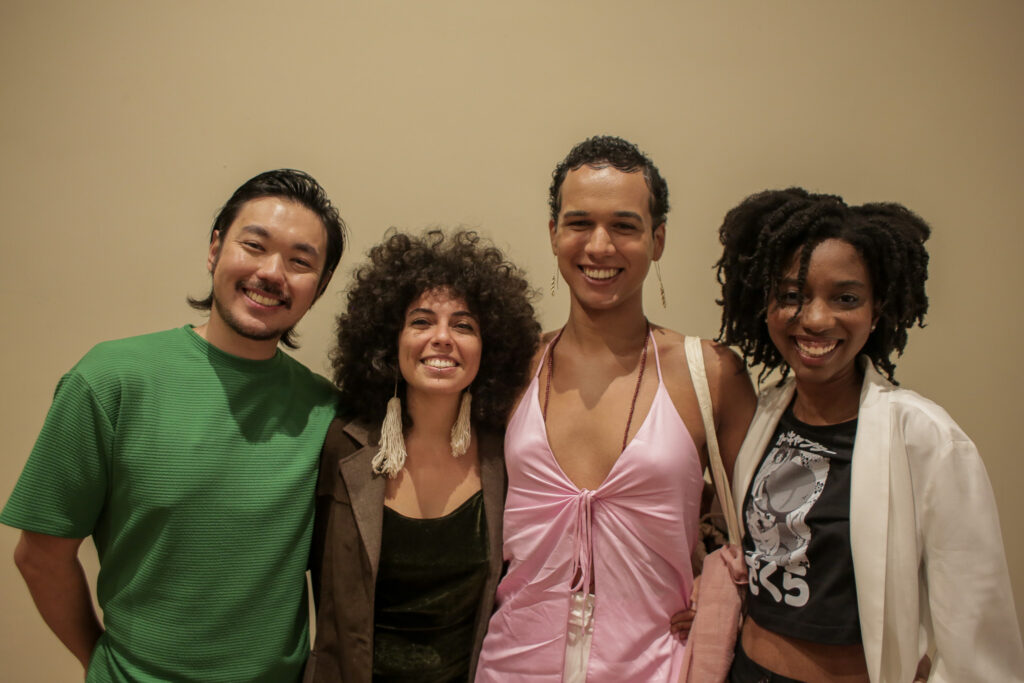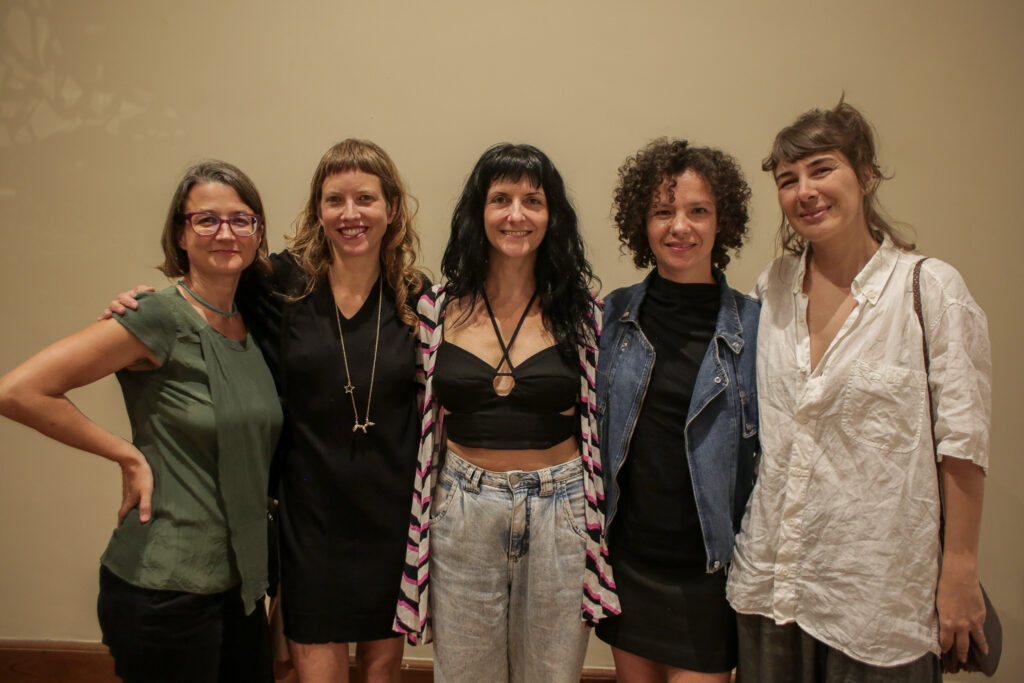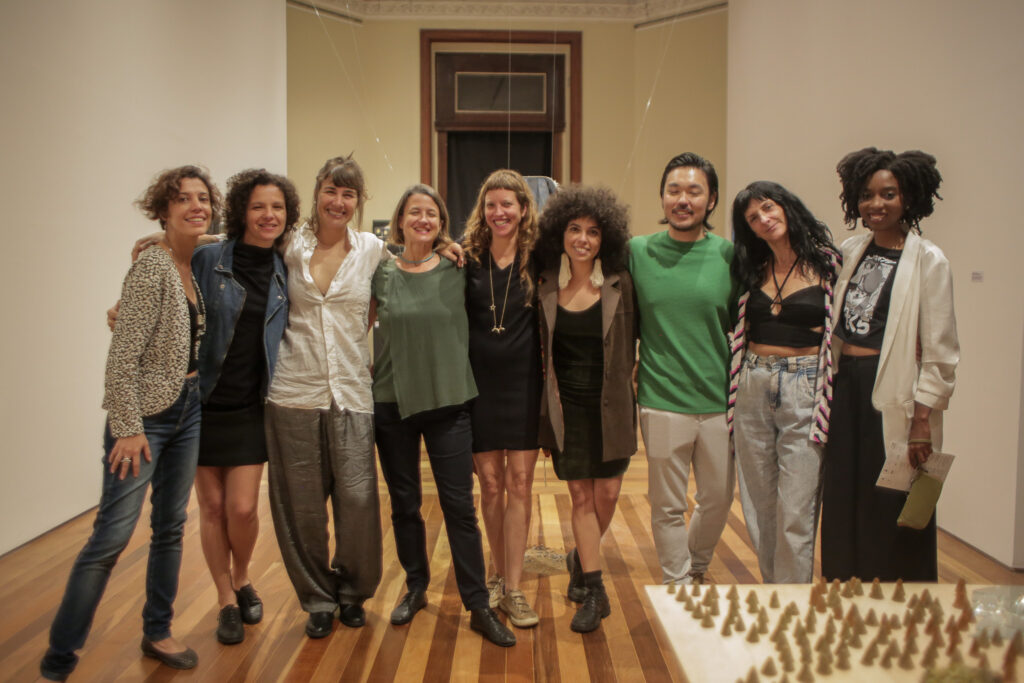Coexistence, negotiation, symbiosis, metamorphosis, exchanges, conflict and regeneration: all the vibrant complexity of rural and urban ecosystems permeated the experiences of Azizi Cypriano, Lorena Portela, Yaminaah Abayomi and Rubens Takamine during the residency period of the City of the Forest Project (projeto Cidade da Floresta).
Over five weeks, amidst walks and breaks, experiences and reflections, feasts and fermentations, several poetic and political shots were launched. During that period, the group of artists followed individual, collective, geographic and conceptual trajectories that are now materialized in the exhibition Beginning, Middle, Beginning.
The duration of the artistic residency programs is often destined for fluidity. Everything continues to happen even after the period of immersion, and the end ends up being confused with the beginning. In the exhibition, the artists explore this idea and invert the logic of the values in force, which reward arrival, achievement, the closed circuit. Thus, they revere digression as a project and the process as an intention.




